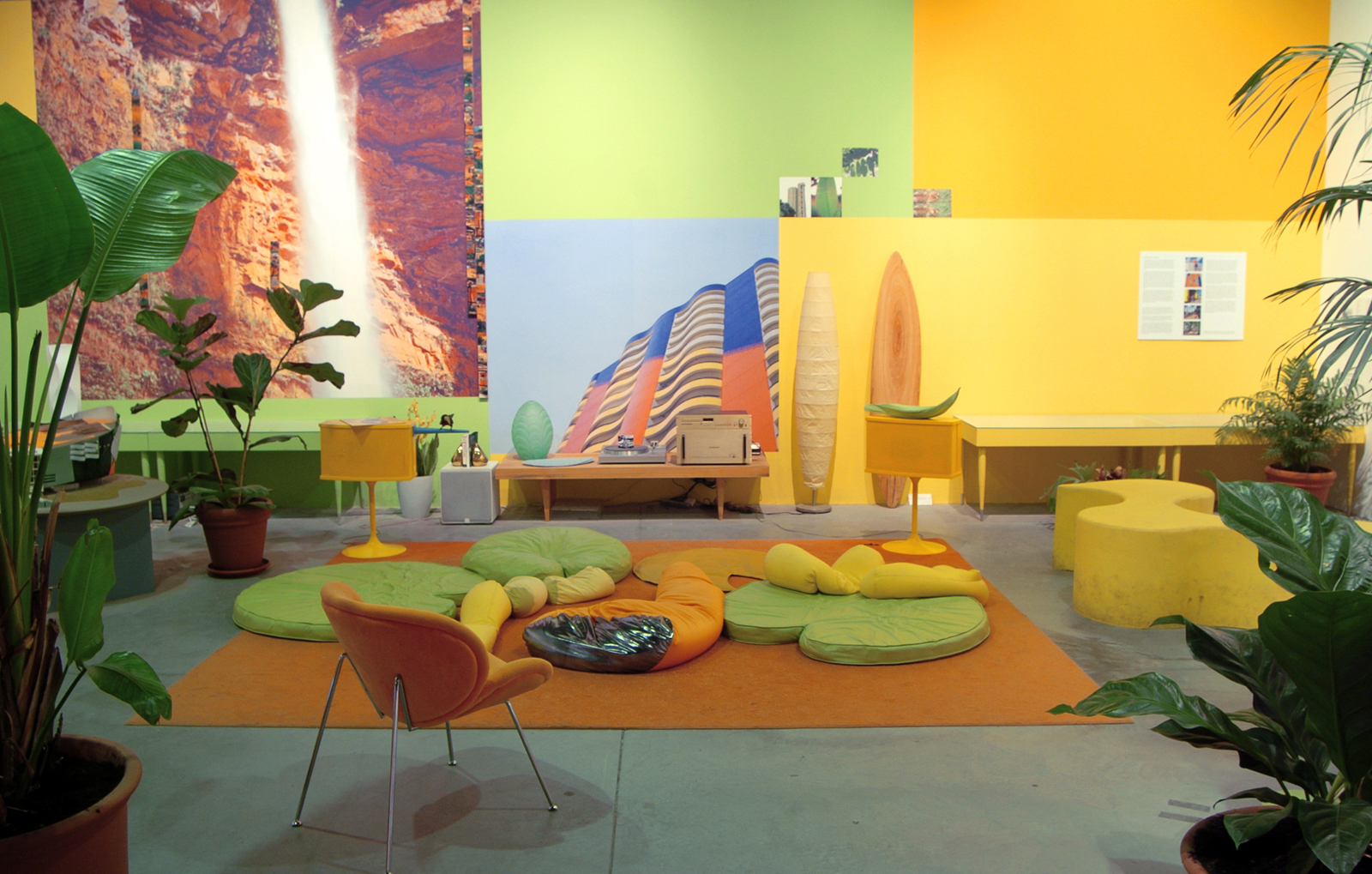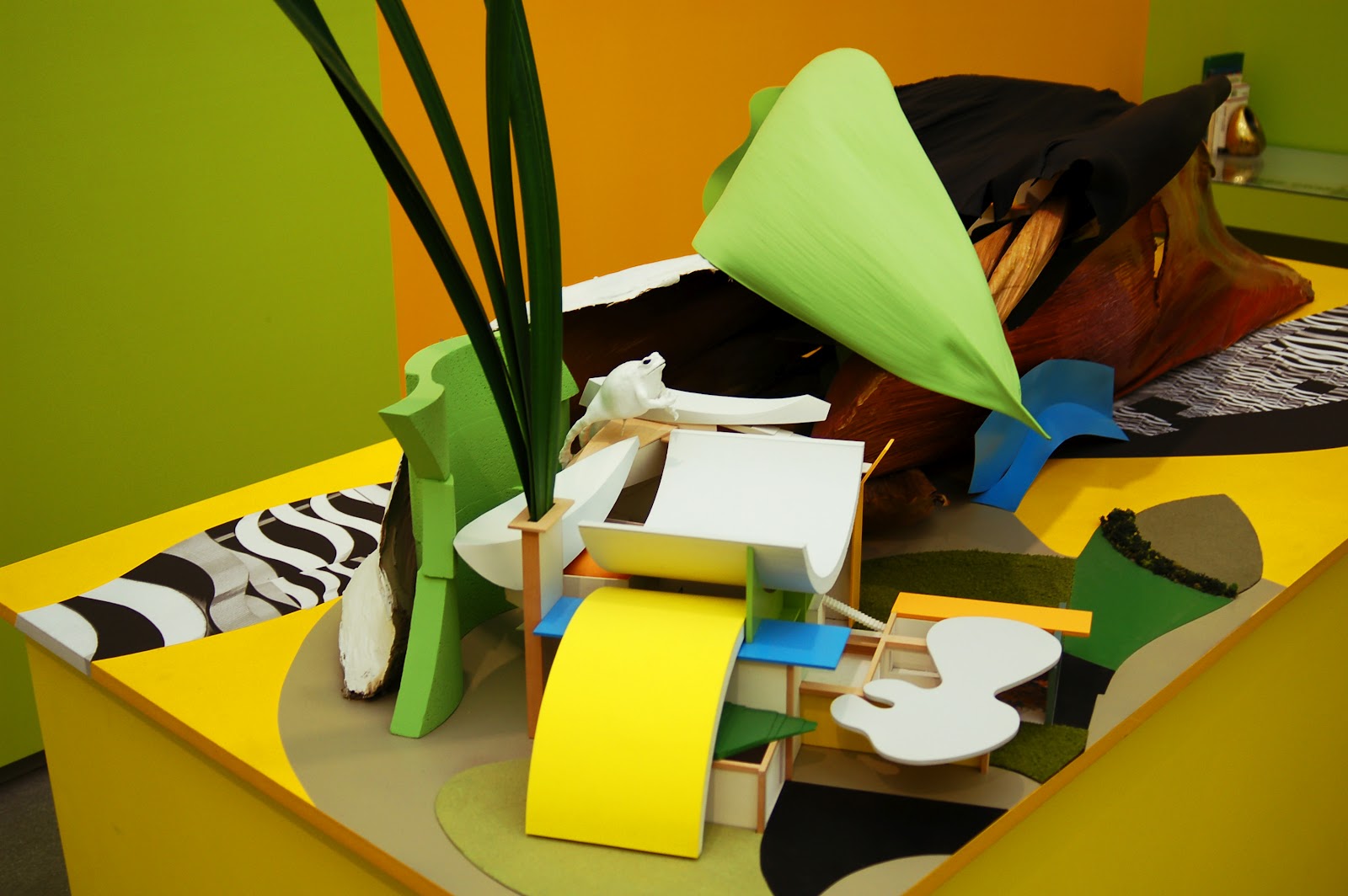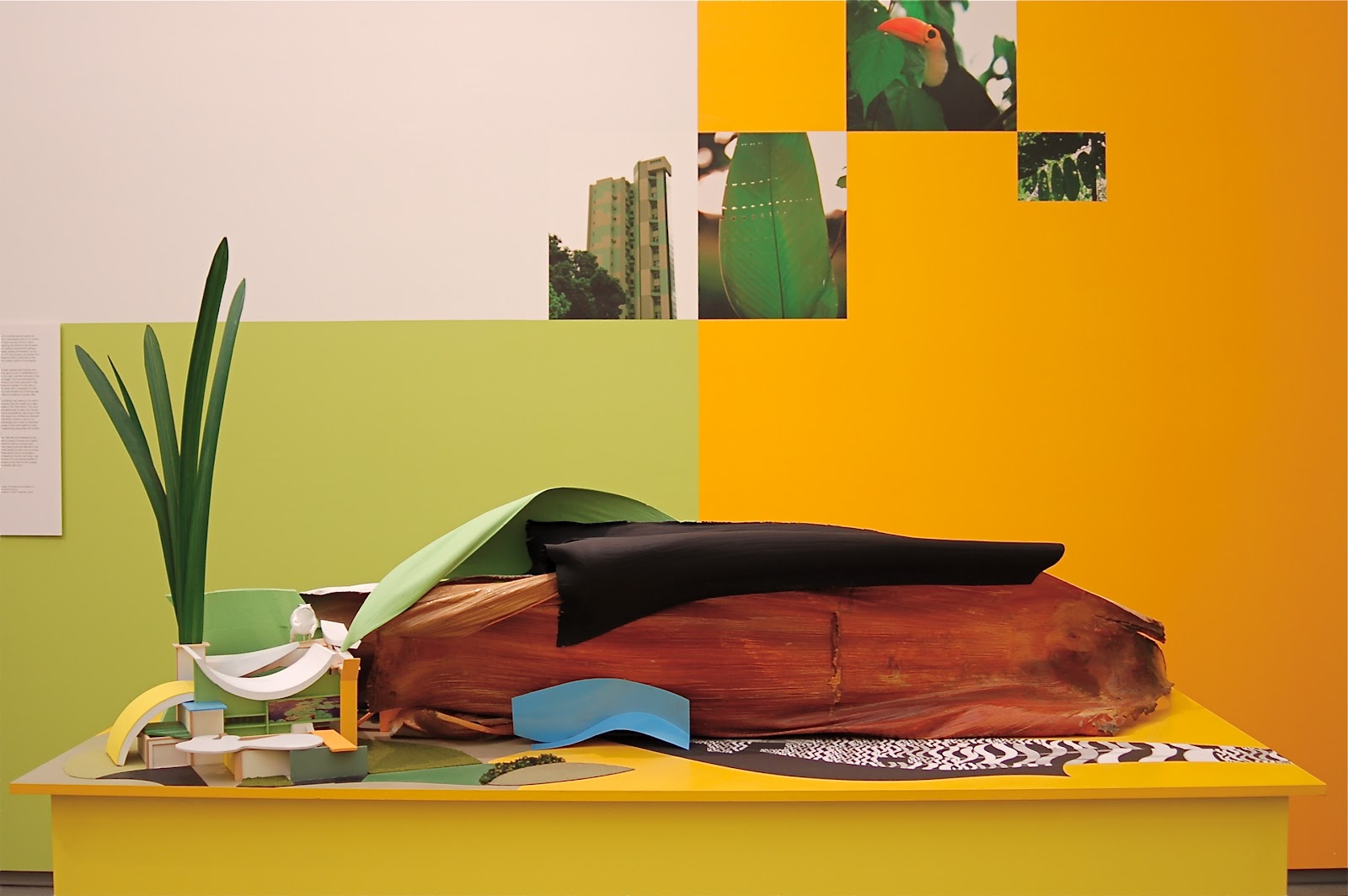Modernismo Tropical
Taking short steps to disguise my limping, I headed towards the residential area above the shantytown. I crested the hill and came into a wide avenue of puzzling, idiosyncratic features. The tallest buildings were distributed alongside as if they were in a carnival parade, but instead of dancing to the deep beat of the African drums, they seemed to be swinging to the smooth sound of bossanova. Their monumental presence ostentatiously announced the triumph of modernity over the jungle.
The facades of those carnivalesque buildings were covered with mosaics of pure colors, with curved balconies of organic design. Some were aesthetically refined, others silly but fun, many others painful to look at. I concluded that this tropical architecture established a dialogue with nature not in order to camouflage itself, but to contend with it. In some cases, it acquired an emblematic presence that not only competes with mango trees, coconut palms, and parrots, but also imitates them. Even if this extravagant degree of belief in the symbolic function of form derives from the golden age of Brazilian architecture (1), it must have made no use of avant-gardist rupture to establish itself, since its grace relies in the deviation of high modernism towards the regional.
Thus modernist architecture went someplace else, and by forgetting Cartesian logic entered a sinuous terrain that left it under the shelter of shamanism. It is hard to tell how this detour started, if whether as a formalist exercise or as the result of heat stroke. In any case, it drove architecture into a performative space, to cross-dress as animal or plant. Was I hallucinating? Or could it be that architecture in the tropics also took the sad path of unfulfilled promises that abstract thought limps along toward the high purity of forms to end up (more often than not) cramped in some sort of metaphor? Could it be that these architects were also chased by dogs? (2)
It seems plausible that the next trend in architecture will openly embrace shamanistic strategies. After all, it has already done it in a somewhat restrained manner. In the near future we may come to see a bizarre array of organic buildings acquiring the status of natural specimens. Parrot color-chart architecture, banana institutional buildings, pineapple churches, crocodilian houses, snake promenades, toucan theaters, orchid subway stations, etc. If in the process, all species end up being represented, cities could become entire inventories of the natural kingdom and the whole of the modern world a monumental paradise. When the shaman impersonates animals, speaks their tongues and emulates their movements, his actions are not just a manifestation of hysteria but the careful construction of a sign, one that indicates to the tribe that he had entered the "edenic stage." He now embodies the spirits of the animals and the plants and much more, because in that process of transformation he has gone up a ladder or a tree with a request from the tribe and is coming down with a message from the creator. However modern, a building cross-dressed as something else and presented as a message from above is indeed an ancient idea.
The materialism embodied in these buildings has nothing to do with a dialectical logic, but it is the fruit of excess that the modern as a sign of social status acquires in the societies of the Third World. This modernosa architecture, by the mere fact of being simultaneously modern and vernacular, stands on a hybrid ground that the universalist discourse of the cannon cannot entirely name. It is the case of an architecture decidedly drunken by and sunken in the eccentricity of kitsch - a kind of unleashed, paradigmatic kitsch that submerges all of what is modernist. As a result - helped by the blurring power of time and fueled by suspicious flows of capital - it manages to generously resuscitate the modern as a parody of itself.
After photographing so compulsively, I felt tired and stressed by the heat and the pain of the bite. I limped a couple of blocks and made it to a plaza. There I finally sat on a bench to drink an orange juice. Amongst the trees I noticed some very large birds that seemed to be constructed of plastic. Then I saw that people formed a line as if waiting for their turn to talk to them. These parrots - which embodied a mysterious mix of confessional and telephone booths - had taken over the environment of the plaza and turned it into an artificial Garden of Eden. It was as if the telephone company knew that he who speaks the tongue of the animals also talks directly with God. (3)




NOTES
1. The author refers to the period between the mid fifties and sixties marked by the Nova Cap Brasilia project. To build the new capital the government commissioned an extraordinary team of architects. Lúcio Costa was in charge of the major urban plan, Oscar Niemeyer designed most of the government buildings, and Roberto Burle-Marx conceived the landscape and gardens.
2. The author's use of narrative contiguity - since he was previously bitten by a dog while attempting to take a photograph - places abstraction in opposition to photography, a pardox in which both share a similar destiny. Based on Roland Barthes' assertion that photography is a message without a code, the unavoidable result of abstraction would be to produce a code without a message. "To end up cramped in some sort of metaphor" underlines the methodological incongruence that takes place when modern archtecture relies on symbolic form and undermines its functional purpose. The paragraph suggests that while postulating itself as an idealism of biomorphic archetypes, tropical architecture acquires symbolic content, or even metaphorical meaning, thus deviating - substantially from the modernist concept of architectural function.
3. The author refers to the medieval iconolgy of the plaza as a recreation of earthly paradise. The presence of artificial parrots among tropical vegetation is interpreted as an instance in which vernacular culture secularizes the medieval imaginary.




























